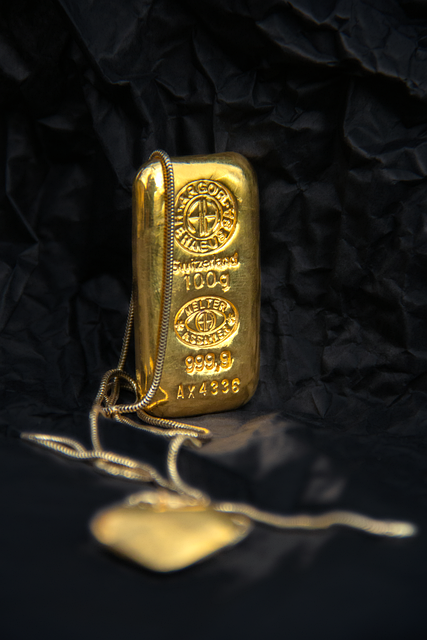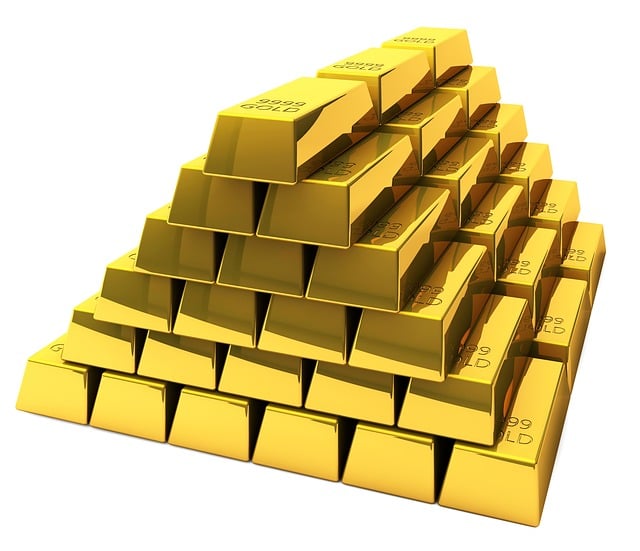
Legacy Precious Metals offers a secure platform for investors to invest in gold and silver, providing tangible assets that can protect wealth against market fluctuations and economic instability. The company supports clients with educational resources and transparent pricing, ensuring secure storage options for informed decision-making. These metals have historically served as a reliable store of value and hedge against inflation, with gold being the traditional safe haven. Silver offers both investment and industrial potential, platinum balances portfolio needs through its use in automotive and jewelry sectors, and palladium provides a unique speculative opportunity due to its role in pollution control. Legacy Precious Metals are immune to counterparty risk, offering stability and security beyond traditional stocks and bonds, making them an essential part of diversified investment portfolios for wealth preservation over the long term. Investors should consider economic conditions, geopolitical events, industrial applications, and cultural significance when evaluating these metals as investments, as they are influenced by a wide array of factors including supply chain disruptions, technological advancements, and regulatory changes. Staying informed on how these elements impact the markets is vital for those looking to invest in legacy precious metals.
Explore the enduring allure and strategic value of Legacy Precious Metals with our comprehensive guide. Delve into the historical significance these assets have played in wealth preservation, and understand how they differ from other investment vehicles. From gold to palladium, learn about the various precious metals that can fortify your portfolio. This article dissects the factors driving demand, the influence of geopolitical events, and the nuances of physical versus paper assets. It provides actionable strategies for integrating these metals into your investment mix, addresses tax considerations, and guides you through choosing reputable dealers and secure storage solutions. Navigate inflation’s impact, long-term trends, and market volatility to make informed decisions. Whether you’re a novice or an experienced investor, this guide offers valuable insights for enhancing your Legacy Precious Metals portfolio in an evolving economic landscape.
- Understanding Legacy Precious Metals: An Overview
- The Historical Significance of Precious Metals in Wealth Preservation
- Types of Precious Metals for Investment: Gold, Silver, Platinum, and Palladium
- How Legacy Precious Metals Differ from Other Investment Vehicles
- Factors Influencing the Demand for Legacy Precious Metals
- The Role of Geopolitical Events in Precious Metals Markets
Understanding Legacy Precious Metals: An Overview

Legacy Precious Metals stands as a reputable entity in the realm of investment, offering a diversified portfolio of precious metals to investors. With a focus on gold and silver, among other commodities, Legacy Precious Metals provides individuals with the opportunity to invest in tangible assets that can act as a hedge against market volatility and economic uncertainty. Understanding the intricacies of precious metals investment is paramount when considering this type of asset allocation. Legacy Precious Metals simplifies this process by offering education, transparent pricing, and secure storage options, ensuring that investors can make informed decisions tailored to their financial goals and risk tolerance.
The allure of precious metals as an investment lies in their historical significance as a store of value and their ability to preserve wealth over time. Legacy Precious Metals emphasizes the importance of including these assets within an investment portfolio to achieve balance and mitigate risks associated with paper assets or other volatile investments. By offering a range of products from coins to bars, Legacy Precious Metals ensures that investors have access to quality items with verifiable authenticity and purity, thereby providing peace of mind alongside the potential for capital appreciation and diversification benefits.
The Historical Significance of Precious Metals in Wealth Preservation

Throughout history, precious metals have been a cornerstone in the preservation and accumulation of wealth. Their durability and intrinsic value have made them a reliable store of value across generations. Legacy Precious Metals, embodying this timeless quality, have played a pivotal role in wealth preservation strategies for centuries. Gold, silver, platinum, and other precious metals have been used as currency, investment, and assets to protect against economic uncertainties. Their historical significance is evident in ancient civilizations where these metals were hoarded, traded, or minted into coins, serving as a hedge against the volatility of paper currencies and uncertain political climates. During periods of inflation, currency devaluation, or economic downturns, investors have consistently turned to precious metals as a safeguard for their purchasing power. As such, they remain integral to diversified investment portfolios aimed at long-term wealth preservation, a testament to their enduring value and relevance in the realm of Legacy Precious Metals investments. The continuity of this asset class across time underscores its role as a legacy that can be passed down through generations, offering a tangible means to protect and enhance inherited wealth.
Types of Precious Metals for Investment: Gold, Silver, Platinum, and Palladium

Investing in legacy precious metals such as gold, silver, platinum, and palladium can be a strategic component of a diversified investment portfolio. Gold has long been recognized as a traditional safe-haven asset, maintaining its value over centuries and often serving as a hedge against inflation and economic uncertainty. It’s valued for its inherent scarcity and demand across various industries, including electronics and jewelry.
Silver, known for its industrial applications as well as its role in coinage and jewelry, offers both investment potential and utility. Its price sensitivity to economic shifts can present opportunities for investors looking for a more volatile but potentially rewarding precious metal. Platinum, less commonly held than gold or silver but similarly durable and rare, is highly sought after for its use in automotive emissions control devices and in the jewelry market. Its demand is influenced by these industrial applications, making it a niche investment that can complement a diversified portfolio. Lastly, palladium has gained prominence due to its essential role in pollution control systems within the automotive industry. It’s often seen as a more speculative yet potentially lucrative addition to an investment strategy, given its supply constraints and demand patterns. Investors considering legacy precious metals should research each type’s market dynamics, historical performance, and potential impact of macroeconomic factors to make informed decisions aligning with their investment goals.
How Legacy Precious Metals Differ from Other Investment Vehicles

Legacy Precious Metals stand apart in the investment landscape due to their inherent characteristics and the unique advantages they offer. Unlike traditional investment vehicles such as stocks or bonds, precious metals like gold, silver, platinum, and palladium are tangible assets that have intrinsic value. They serve as a hedge against inflation and economic uncertainty, maintaining their worth even when fiat currencies may be devaluing. Investors often turn to Legacy Precious Metals as a diversification strategy to protect and preserve their wealth over the long term. The metals themselves are not subject to counterparty risk, which is a significant concern with investments in companies or financial instruments. Furthermore, Legacy Precious Metals can act as a safe haven during market volatility and geopolitical events, offering a degree of stability and security that other investment classes may lack.
Another distinguishing factor of Legacy Precious Metals is their historical role as a medium of exchange and store of value, a tradition that spans millennia. Unlike the ephemeral nature of digital assets or the reliance on corporate performance with stocks, precious metals do not depend on the functioning of systems or entities. This independence from external factors makes them a consistent choice for investors seeking to safeguard their capital against various risks. Additionally, Legacy Precious Metals are accessible through various forms, including coins, bars, and certificates representing allocated storage in secure vaults. This accessibility, combined with their time-tested role in wealth preservation, positions them as a unique and valuable addition to any investment portfolio.
Factors Influencing the Demand for Legacy Precious Metals

When considering an investment in legacy precious metals, it’s crucial to understand the various factors that influence their demand. Economic stability and global market trends are primary drivers; during periods of economic uncertainty or inflation, investors often flock to these tangible assets as a hedge against currency devaluation and market volatility. The precious metals sector is also subject to geopolitical events, which can affect mining operations and supply chains, thereby impacting the availability and price of legacy precious metals like gold, silver, platinum, and palladium.
Additionally, the demand for these metals is affected by industrial applications. Gold, for instance, is used in electronics and dentistry, while silver is prominent in photography, solar panels, and as a catalyst in various chemical processes. The health of these industries directly correlates with the metal’s industrial demand. Moreover, cultural factors play a significant role; certain societies have historical and religious significance attached to specific metals, influencing their use in jewelry and artifacts, which in turn affects the legacy precious metals market. Investors should monitor these factors, including shifts in consumer preferences, technological advancements, and changes in regulatory environments, as they all contribute to the evolving landscape of precious metals investment.
The Role of Geopolitical Events in Precious Metals Markets

When considering an investment in Legacy Precious Metals, it’s crucial to acknowledge the significant influence geopolitical events can have on market dynamics. These events, ranging from international conflicts to economic sanctions and trade agreements, often create a climate of uncertainty that investors perceive as risky for traditional asset classes. In such times, the demand for precious metals like gold, silver, and platinum tends to increase as they are traditionally seen as safe-haven assets. Gold, in particular, has historically held this status, with its value often inversely related to economic instability. Investors turn to Legacy Precious Metals as a hedge against inflation, currency devaluation, and geopolitical tensions that could potentially destabilize global markets.
Understanding the interplay between geopolitical events and precious metals markets is key for investors in Legacy Precious Metals. Market sentiment can shift rapidly with news of political unrest or significant policy changes, leading to fluctuations in precious metal prices. Conversely, when geopolitical risks subside, there may be a shift back towards riskier assets, potentially affecting the price of these metals. Therefore, staying informed about international affairs and their potential impact on commodity markets is essential for investors looking to navigate the complexities of investing in Legacy Precious Metals. Keeping a finger on the pulse of global events can help investors make more informed decisions, aligning their portfolios with their risk tolerance and investment objectives.
navigating the realm of investment can be complex, but incorporating Legacy Precious Metals into a diversified portfolio offers a time-tested strategy for wealth preservation. From the historical significance of gold and silver to the contemporary roles of platinum and palladium, understanding the unique characteristics and market dynamics of these assets is crucial for investors. As geopolitical events continue to shape market landscapes, Legacy Precious Metals often serve as a reliable hedge against uncertainty. By considering the factors that influence demand and differentiating Legacy Precious Metals from other investment vehicles, investors can make informed decisions tailored to their financial objectives. This guide has demystified the process of integrating precious metals into your investment strategy, providing a solid foundation for those interested in exploring this avenue further.







